Mars Desert Research Station
Mission Summary
Crew 289 – Deimos
Dec 25th, 2023 – Jan 6th, 2023
Crew Members:
Commander: Adriana Brown
Executive Officer and Crew Journalist: Sara Paule
Crew Geologist: Eshaana Aurora
Crew Engineer: Nathan Bitner
Health and Safety Officer and Crew Astronomer: Gabriel Skowronek
Green Hab Officer and Crew Biologist: Riya Raj
Crew Scientist: Aditya Arjun Anibha

Acknowledgements:
Crew 289 is thankful for the critical support of the following individuals associated with the Mars Society and Management of MDRS: President of the Mars Society, Dr. Robert Zubrin, who endorsed Purdue Crew 288 and 289 serving at MDRS this season; MDRS Director Sergii Yakimov, who assisted us in-situ, trained us, and answered our many, many questions; Director of Observatories Peter Detterline, who assisted our crew astronomer with imaging, analysis, and guidance all throughout preparation and mission; Scott Davis at the NorCal Mars Society for his assistance with troubleshooting EVA suits during mission; Mars Society Executive Director James Burk; Director of Media and Public Relations Michael Stoltz; MDRS IT Coordinator Bernard Dubb; and Senior Director of Analog Research Dr. Shannon Rupert. Additionally, we could not have done this without the support of our institutions – Purdue University and the University of Michigan. We wish in particular to thank Dr. Kshitij Mall and Purdue Mission Support staff, all of the faculty who supported us in our research and crew selection; and our home departments. Additionally, we could not serve at MDRS without financial support so our deepest gratitude goes to our external and internal sponsors, who made our participation financially possible. We are additionally thankful to the previous Purdue crews whose legacy has paved the way for our participation at MDRS and also our friends and families who loved us enough to willingly accept minimal contact with us throughout the winter holidays.
Mission description and outcome:
MDRS Crew 289 “Deimos”, twin of mission 288 “Phobos”, is the seventh all-Purdue crew at MDRS. Crew 289 was a diverse crew; it comprised undergraduate, Master’s, and PhD students. The students represented the departments of Earth and Environmental Sciences, Civil Engineering, Earth, Atmospheric, and Planetary Sciences, Mechanical Engineering, Astronomy and Physics, Communications, Electrical and Computer Engineering, and Aeronautics and Aerospace Engineering. The crew completed eleven EVAs during their rotation at MDRS and made successful progress on all research objectives. The crew maintained a high fidelity simulation by practices such as relying on the Martian stores of food, restricting communications to set windows, and formulating a water budget and conserving the resource for strictly necessary activities. Interpersonally, the crew strengthened their relationships and camaraderie, as evidenced by the call signs developed during the mission, collection of quotable moments, and many cheerful evenings spent on the upper deck.
Summary of Extravehicular Activities (EVA):
After being trained in the use of rovers and in the safety protocols for EVA, the crew had eleven excursions during rotation 289, two of which being the traditional short EVAs to Marble Ritual. The remaining EVAs were long excursions, where the crew greatly maximized time usage, especially the time spent walking and performing field activities, LiDAR scanning, and robotic/drone image capture and maneuverability tests which was on average 85.18% of the total EVA time. The EVAs reached areas in the Tununk Shale (Hab Ridge), Morrison Formation (mostly along Cow Dung Rd), Dakota Sandstone (Candor Chasma), and looked into the Jurassic Strata (White Rock Canyon). The EVA served multiple research projects and was used to train crew members who were inexperienced in geologic field work, remote communication and LiDAR scanning.

Table 1. Summary of EVA, indicating Sol of execution, total duration and distance covered, time and distance spent walking and performing activities, and time percentage spent on site and walking.

Map 1. Satellite map of the EVAs performed by MDRS 289 crew and of the Station points where samples were collected
Summary of GreenHab Activities
The GreenHab is the best part of the entire MDRS campus. It was a place for me to provide the best care to all the adorable little plants. When I first came in, I noticed that Crew 289’s GHO did a fantastic job in setting the foundation for most of the veggie plants such as the carrots, cucumbers, and tomatoes. My work in the GreenHab ensures proper growth for the plants that are now within their intermediate growth stage. The broccoli and radishes were replanted into a larger pot since they will be growing deeper roots. The carrots were replanted with small doses of the organic and MiracleGro fertilizer to allow the roots to set in place. The new planted spinach, onion, and mint should also be sprouting their little seeds soon. To keep the humidity at a proper level, adding cling wrap helps. Just ensure that air is still coming in to avoid mold and fungus. Composting the produce waste like orange peels, leftover dehydrated food, and old leaves are a good way to keep up with recycling and they act as a natural fertilizer for the plants. It is kept in a separate pot for now. The journey of the GreenHab ended with rearranging the gloves, tools, and plants. An updated inventory list of the veggies that are already planted is taped on the static tank to ensure that unnecessary plants are not added. Finally, to make the greenhouse more colorful, consider adding some flowers.
Science Summary
Our crew of 7 worked on a total of 11 projects during our time at MDRS. EVA-related research included geological-based paleoclimate investigations; LiDAR scanning of local terrain by hand, extended monopod, and also by drone; and locomotion testing of the Electronic LeapFrog (E.L.F), a transformable origami robot with and without drone assist. The remaining 8 projects were completed within the habitat and included remote sensing, dust monitoring, air quality monitoring, astronomical investigations, human factors research examining skills usage, review of past crew reports, and two agricultural based projects – one on understanding agrivoltaics and the other examining the effects of stress on plant growth. Crew 289 is pleased with our research progress – each member made substantial progress on their projects during the mission. The breadth of projects spanned multiple engineering specialties, such as aerospace, electrical, biological, mechanical, computer, and civil as well as the fields of communications, psychology, geology, agriculture, and astronomy.
Crew Projects:
Project 1
Title: Remote Station Monitoring
Author: Nathan Bitner
Description, activities, and results: The goal of this project is to provide MDRS crew and mission control with air quality data and airlock statuses from the MDRS station. Through work conducted by Purdue crews 288 and 289, two air quality modules have been created that successfully send information to an adafruit dashboard. This dashboard can then be accessed remotely by those with the account information. The software for these boards, and all the others to be deployed, is on the GitHub page https://github.com/bitNathan/MDRS_monitoring_overlay/tree/main made for this project. More technical details and documentation can also be found there.
Each module uses a Raspberry Pi Pico W board to send data to the dashboard and control the connected sensors. Each board currently measures temperature, CO2, VOC, ozone, and PM2.5 particles using separate sensors that were purchased before the mission. The Raspberry Pi then automatically uploads a snapshot of this data to the dashboard hourly.
Shipping delays and technical difficulties prevented full deployment of some air quality sensors during this rotation, and other difficulties with the board themselves prevented full deployment over our intended timeline. Our idea to use battery packs made from AA batteries connected together works, but it is labor intensive to make these packs and they provide, at best, power for only two weeks of operational use. In the future, switching to power via wall fixture or rechargeable batteries that can be routinely rotated would provide a permanent solution. In addition, an unknown connection error appeared roughly halfway through crew 289’s rotation which prevented long term testing.
In the future, Purdue plans on continuing this project to complete what was started by these two crews including full air quality and airlock status deployment in addition to adding monitoring for EVA suit charges, water level detection, and online crew logs and schedules. All of these are possible using equipment already at the station, aside from wire, LEDs, resistors, casing, and long-term battery solutions.

Figure 1. Adafruit dashboard consisting of air quality data collected from MDRS habitat. Top) The main dashboard screen shown here is highly configurable, but for testing it contains just one plot of all the air quality data from one sensor module. This can be expanded to include other rooms as well as other information. Bottom) The adafruit website refers to a stream of data as a feed. In this image we can see the feeds from our first prototype air quality module grouped together by the location that they are intended to monitor.
Project 2
Title: Recording Dust Levels in the HAB
Author(s): Gabriel Skowronek
Description, activities, and results: The objective of this project involved qualitatively tracking the amount of dust that settles down on surfaces throughout the Habitat. Several sites were chosen throughout the Hab, including both the upper and lower deck. In the lower deck, the top shelf of the comms station and the black cabinet underneath the first aid station were of interest. In the upper deck, the comms station surface and the top of the kitchen cabinets were chosen. Samples of dust were collected by swabbing the surfaces with a moistened cotton swab and subsequently observed using a handheld magnifier. Initially, the surfaces were thoroughly cleaned with wet wipes to obtain a clean baseline to track further dust accumulation over time. Swabbing was then conducted every 2-3 days, with observations like number of particulates, relative size and color being recorded in journal entries. Furthermore, amounts of dust were compared between other locations swabbed the same day. Based on these relative amounts, it was fairly clear that there is a noticeably larger amount of dust particulate buildup in the lower deck of the hab, with the top of the comms station having the most dust particles than any other area. Furthermore, the overwhelming majority of the observed dust was composed of fine, dark fibers of unknown origin. There were also few light colored particles present in swabbing samples (presumably dirt from outside). There was also a white sheet of paper that was left untouched on the lowest shelf near the stairwell of the Hab, which served as a good background to easily spot the total amount of dust that accumulated over a two week period. Because it was not swabbed or otherwise disturbed until Jan. 05, it served as a good comparison with the other areas of the lower deck. The type and amount of dust present on the white paper was similar to the other swabbed areas of the lower deck at the end of the rotation.
Project 3
Title: Astronomy on Mars
Author(s): Gabriel Skowronek
Description, activities, and results: This project involved two distinct objectives: 1) Determining the period of variation of the Cepheid variable star, SW Tauri and 2) capturing impressive images of deep sky objects for outreach purposes. For the first mentioned project, the RCOS-16 remote telescope was used to take one or two 20-second exposures of SW Tauri each night (with weather permitting). Furthermore, since it was of no interest to process these images in color, only the visual filter was used. To determine the magnitudes, the program AfterGlow was used because of its simplified process. The alternative but more rigorous process in AstroImageJ was not used because of the steeper learning curve which was difficult to tackle with the time constraints and limited internet access for troubleshooting. To obtain more accurate measurements of intensities, the process in AstroImageJ will be implemented post-MDRS. The final step will include plotting the intensity measurements against time to determine the period of variation. Preliminarily, the period seems to be approximately 48 hours, which matches expectations. The second objective aimed to capture color images of M1 (Crab Nebula) and M42 (Orion Nebula). An image of M1 was taken on the MDRS-WF, with RGBLH filters being used with exposures of 75 sec, 150 sec, 300 sec, 150 sec and 300 sec, respectively. This proved to produce an overexposed image so an updated imaging request was sent with smaller exposure times. Due to technical difficulties with the MDRS-WF, this image was not able to be retaken. Similarly, M42 was also not able to be imaged. It is expected that once the difficulties with the MDRS-WF are addressed, the images will be taken and processed remotely.

Figure 2. (A): An image taken using the RCOS-16, with emphasis shown on the variable star, SW Tauri, and the comparison star with well documented and stable intensity. (B): A processed image of M1 (Crab Nebula) taken using the MDRS-WF.
Project 4
Title: Comparison of Self-selection Traits versus Skill Utilization by Mars Colonists
Author(s): Sara Paule
Description, Activities, and Results: The intention of this project was to examine the skills (e.g., flexibility, leadership, communication, problem-solving, domestic skills, etc.) most used by “colonists” in their day-to-day activities at the Mars Desert Research Station (MDRS) versus their ratings of importance pre- and post-mission. The pre-mission survey was collected via Qualtrics, as will be the post-mission survey, which will be distributed to everyone the week after the mission ends.
During the mission, the crew completed daily surveys from Sol 1 (December 25, 2023) and will complete their final survey today, Sol 12 (January 5, 2024). These were completed at the end of the mission day as planned and converted to digital format the following day.
Data will be analyzed post-mission after completion of the post-mission survey. As of this moment, I can note that there is wide variability among “colonists” in their daily skill usage responses. However, a few kills are more uniformly used. Excepting Sol 12 data, this includes Q2 knowledge – to learn and contribute valuable knowledge (M = 7.2, SD = 1.5), Q13 prioritization – determining task order based upon multiple completion criteria (M = 7.8, SD = 1.5), and Q17 problem-solving – to identify an issue and alternatives for addressing said issue (M = 7.6, SD = 1.5). Most skills were used semi-regularly with the exception of Q6 risk – to take risks and chances (M = 4.0, SD = 1.5).
This is a very small sample size so the research would benefit from additional participants. Future research might include a question about whether or not the individual participated in an EVA that day to ascertain if there is a difference in skill usage for days when on EVA versus remaining at the Habitat.
Project 5
Title: Establishing Best Practices in Mission Reporting from Prior Crew Reports
Author(s): Sara Paule
Description, Activities, and Results: Objectives were to examine past reports to begin to establish best practices by gaining an understanding of common content within prior reports, Specific aims included: 1) establish the average word length of the various report styles, 2) examine whether crew members are most often referenced by surname/family name, given name, or both, and 3) determine common subject matters within reports, such as references to meals, sleep, showering, etc.
Pre-mission all the reports for the past calendar year were downloaded from the MDRS Reports webpage. A sample from each mission of the last year uploaded to the reports repository for both the Journalist Report and Sol Summaries were randomly selected for analysis from the reporting repository. Additionally, random samples of the Journalist Report and Sol Summaries were pulled from the emails of the prior crew (288) that were received pre-mission. In total, 15 crews were identified during that time period and 14 Journalist and 12 Sol reports were acquired using the aforementioned methods.
Word length and character length have been calculated for each.
Length in words: Journalist Report (M = 322, SD = 112) and Sol Summary (M = 377, SD = 259).
Length in characters: Journalist Report (M = 2180, SD = 661) and Sol Summary (M = 2184, SD = 1474).
There was comparable word length and character length though greater variability in the Sol Summary than the Journalist Report.
When it comes to referring to personnel, there is no consistency in reference style. Roles are included only about half the time. Referring to astronauts by first name only is the most common (6 occurrences in each report style), which is higher than surname/family name only (2 occurrences in the Journalist Reports and only 1 in the Sol Summaries) or full names (2 per Journalist and 3 per Sol).
On topicality, references to crew scientific endeavors are by far the most common in both (12 of 14 in the Journalist Reports and 9 of 12 in Sol Summaries). Meals are the second most mentioned topic in each (10 of 14 in the Journalist Reports and 6 of 12 in Sol Summaries) but the Sol Summaries mention relaxation activities as often as meals (6 times out of 12). Those serving as journalists are more likely to discuss ethereal matters, for instance discussing the beauty of the landscape (5 mentions versus 1) or feelings about the experience (8 versus 3 mentions) than those writing the more practically focused Sol Summaries.
A more thorough examination could be conducted by reviewing additional samples from within the same year and/or extending inclusion beyond the past calendar year. Additional report types remain to be analyzed.
Project 6
Title: Martian analog paleotemperature reconstruction
Author(s): Adriana Brown
Description, Activities, and Results: With the onset of cutting-edge geochemistry, the temperature and dynamics of ancient water systems can be determined better than ever before. Performing analysis on carbonates will be essential to understanding climate history on Mars due to their power to record water temperature and isotopic composition – abiotic factors that determine essential biological controls, such as oxygenation and environmental habitability. This project collected sediment and Gryphaea samples from the Tununk Shale to study the coastline of the Cretaceous Western Interior Seaway during the Turonian stage. The samples collected will provide information about the temperature of the seaway during the time the Gryphaea lived using carbonate clumped isotopes, where the carbonate is sourced from the bivalves and, if needed for higher resolution, foraminifera in the sediment samples. Carbonate clumped isotopes measure the frequency of “heavy” isotopes of oxygen and carbon to be bonded together within the carbonate ion – a temperature-dependent process. These paleotemperature results will be integrated into my wider thesis research which aims to reconstruct latitudinal temperature gradients of the Western Interior Seaway – an important control on climate sensitivity.
The objectives of this project were to (1) sample a measured section of sediments up the side of Hab Ridge, (2) identify the percent of carbonate present in sediments, (3) collect Pycnodonte fossils from the Tununk shale near Hab Ridge for carbonate clumped isotope analysis, (4) identify bentonite presence and frequency within the Tununk Shale, and (5) catalog and prepare gryphaea samples for drilling. 90 Gryphaea fossils have been collected from two sites on Hab Ridge and one site from the upper strata of White Rock Canyon. The first Hab Ridge fossil collection site was characterized by a medium to coarse grained quartz-rich sand, containing chert, sandstone, siltstone, and mudstone pebbles. Site one also contained many calcite crystalline structures within the loosely-consolidated sands. The oysters found at this location exhibited recrystallization of calcite and large amounts of sand cemented onto the fossils. Site two was described as a very fine grained, approximately 12 cm thick silt deposit which was black, gray, and dark purple in color. The fossils were smaller than site one and better preserved with no evidence of sand cement. Some streaks of white to light yellow sediment were found throughout site two, interpreted as bentonite material. The collection site at White Rock Canyon occurred along both sides of Cow Dung Road, and were found embedded in the surficial layer of sediment. The Gryphaea at this site were the largest of all collected and the best preserved, with original color and well-defined growth plates intact. The nature of this deposit, i.e. whether these samples were collected in-place or after being transported, will need to be further examined based on the stratigraphy of that area. Additionally, several bentonite “swarm” locations have been noted, with beds documented at Barrainca Butte and sampled at Hab Ridge. These locations will be compared to other published bentonite data so that the age of the samples collected can be constrained.
In the Science Dome, all samples were cleaned, labeled with a sample ID, and cataloged, thereby ready to return to Earth for geochemical analysis at the University of Michigan’s Stable Isotope Facility. 93 1.0 mL sediment samples from two measured sections of Hab Ridge were documented, representing over 150 ft of strata. The sediment samples were labeled and cataloged according to stratigraphic height and site of section. The carbonate percent weight experiment utilized select samples from these sections and the sediment matrix which the Gryphaea were collected from. The sediments were weighed, then dissolved in 0.1 M HCl., and then weighed again. Based on the results from this experiment, it was found that the clay-rich, darkly colored silt that was present at the base of a Hab Ridge section and from the second site of fossil collection had the greatest percent carbonate at 48.37%. The first Hab Ridge fossil yielded a carbonate weight percent of 16.08%. A sediment sample interpreted as a bentonite yielded a 29.24% carbonate weight percent.

Figure 3. (A): Gryphaea fossil specimen collected from White Rock Canyon. (B): Riya, Adriana, and Gabe collecting sediment samples at Hab Ridge.
Project 7
Title: Mars Exploration by Origami Robot and Drone Scouting or Transportation
Author(s): Aditya Arjun Anibha
Description, activities, and results: Objectives of this study were to apply the concept of transformable origami robots that can exhibit multiple types of locomotion and test their ability to supplement Martian exploration. Investigating the feasibility of transporting the robot using drone and scouting locations of interest prior to exploration was also conducted.
During EVA 3 to Pooh’s Corner, the drone was tested for its carrying capacity within stability limits using a cardboard box container carrying rocks with a suspended transparent fishing line harness to avoid sensor interference and to keep the payload at safer proximity than taping it onto the drone. It was able to carry up to 350 grams before wobbling due to swinging or when directly underneath the drone’s height sensor. The drone would therefore be better used to support the robot rather than carry it due to weight limits.
During EVA 7 to Cowboy Corner, the robot was tested for its ability to traverse mild rocky, uneven and sloped terrain with varied distributions of rocks between 1 cm to 3 cm in diameter. It successfully traveled at a speed of 0.3 m/s for 8 meters in its closed wheel configuration and 57 meters in its open wheel configuration, while supported by a tugging string to lighten its weight to simulate Martian conditions. It climbed three mounds with slope angles varying up to a maximum of 20 degrees.
During EVA 8 to Candor Chasma, the robot traversed two hills of distances 13 meters and 32 meters respectively over mixed rocky and sandy terrain with highly uneven characteristics with the maximum slope angle up to 45 degrees.
Across EVAs and in the Hab, the robot was tested using peristaltic motion with its transformable and controlled origami body as well as jumping about 5 cm allowing it to overcome small obstacles and travel in complex terrain unsuitable for wheels. The robot’s total scale-measured mass on Earth is about 1.5 kg. Its effective scale-measured mass reduced to around 0.9 kg when vertically tugged or supported, which is higher than its expected scale-measured mass on Mars of 0.6 kg. Therefore, we can determine that it would operate freely without the need for a tug-assist on Mars and is an effective method of exploration for uneven terrain that wheeled vehicles cannot traverse safely.

Figure 4. A transformable origami robot with multiple modes of locomotion undergoing tests at a hill near Cowboy Corner, traversing a rocky mound in its open-wheel climbing configuration.
Project 8
Title: Miniaturized Martian Agrivoltaics
Author(s): Eshaana Aurora
Description, activities, and results: Objectives of this project were to 1) comprehensively test the impact of solar and artificial irradiation on crop yields within an enclosed, module-like environment and 2) to understand the feasibility of a miniaturized agrivoltaic farm within the MDRS Greenhab.
The mini farm was successfully assembled in a discreet corner of the Greenhab. Low humidity in the Greenhab was addressed with a makeshift solution—cling wrap placed on top of pots secured by rubber bands with a few open spots for ventilation. Once the saplings had sprouted, the cling wrap was removed, allowing the plants to breathe with higher frequency watering rounds. Notably, the results highlighted that the fully shaded Kale began sprouting around Sol 6, while Bermuda grass seedlings emerged during Sol 9. The findings also underscored that the most robust seed growth occurred in the fully and partially shaded regions, exhibiting more shoots compared to the non-shaded ones, which displayed lower performance as indicated in Figure X.
Following successful troubleshooting and error management, the Arduino and sensors, including temperature, IV Tracer, and solar irradiation sensors, were fully operational for the last few Sols. Each technical issue encountered was meticulously documented, and the datasets were uploaded to a Google Folder. The only dataset that proved elusive was the tracking of shadow depth across a specific Sol, owing to camera problems and cloudy weather at the culmination of our mission.
Importantly, the results indicate the potential advantages of an integrated Agriculture and Photovoltaic (AV) greenhouse module system over separate configurations. The presence of panels and shade not only influenced the microclimate of the plants but also demonstrated the capability to protect plants from the harsh solar radiation on Mars. This underscores the feasibility of an AV system, making it a crucial consideration for optimizing Martian colonization efforts. As we look towards the future of extraterrestrial habitation, the integration of agricultural and solar technologies emerges as a strategic imperative for sustaining life on Mars.

Figure 5. Mini Agrivoltaic Farm with the three different shaded sections- Full shade [FS] (bottom left), Partial shade [PS] (middle left) with 45° angled panels to limit sunlight, and No shade [NS] (top left). Kale was planted on the left row of the mini farm and C4 Bermuda grass was planted on the right. The fully shaded plants performed far better than the non shaded ones further fortifying the feasibility of mini AV farms on space greenhouse modules.
Project 9
Title: Image Scanning of MDRS Campus and Surrounding Terrain
Author(s): Riya Raj
Description, activities, and results: Goals for this project were to evaluate the LiDAR, Photo, Room, and 360 Scan modes on IOS Polycam. Obtaining proper visual structures of surrounding terrain is important for expansion and development. For the mission, my project utilized Polycam on IOS to help get terrain structures of the MDRS Campus and nearby areas. Since MDRS is a growing program, we should also look into things that will help with further research! For example, our recent crew EVAs were helpful in identifying large terrain and flat terrain that could potentially be used for solar farming or other habitats. My album includes 500+ scans of the MDRS campus, flat plains, and major structures of Hab Ridge, Kissing Camel, Candor Chasma, etc. This lets us know what exists and what things could be improved for development. Most scans showcase layering, formations, and structure of the terrain. LiDAR also helps with hazard assessments to scan what large rocks could pose a threat in areas of frequent visitors. Within the field of Civil Engineering, such scanning can also help the Earth and people. We can experiment on solutions that can help preserve our beautiful planet while creating the best living places for people/wildlife to thrive!

Figure 6. Left Figure: MDRS Campus, Middle Figure: Terrain Scan of Hab Ridge, Right Figure: White Rock Canyon Elevated Structure
Project 10
Title: Oxidative Stress Simulation with Hydrogen Peroxide (H2O2) in Kale Seed Hydroponics
Author: Riya Raj
Description, activities, and results: This project aimed to simulate the effects of UV radiation on plants to research more into sustainability and bioregenerative methods.
Hydroponics is a good example of controlled agricultural practices that can help increase plant growth rates and health. During my time at MDRS, I have been using 12-hour intervals with a control vs. variable experiment. The variable experiment includes the addition of H2O2 with the hydroponics module to compare the plant roots and leaves. Supporting data and conclusions will come from:
1) Image scans of the roots/leaves
2) Monitoring the water pH/temp, surrounding temp/humidity
3) Plant cell structure comparisons with microscope views.
Hydrogen peroxide (H2O2) can induce oxidative stress in cells through its role as a reactive oxygen species (ROS). Reactive oxygen species are highly reactive molecules that contain oxygen and include species such as superoxide radicals (O2•−), hydroxyl radicals (•OH), and hydrogen peroxide itself. These species can cause damage to various cellular components, including lipids, proteins, and nucleic acids.
Here’s how hydrogen peroxide can induce oxidative stress:
Formation of Reactive Oxygen Species (ROS): When hydrogen peroxide is present in cells, it can undergo reactions to generate other more reactive ROS, such as hydroxyl radicals. This often occurs in the presence of metal ions like iron or copper, which can participate in Fenton and Haber-Weiss reactions. These reactions involve the conversion of hydrogen peroxide to hydroxyl radicals, which are particularly potent oxidizing agents.
H2O2 + Fe2+ → •OH + OH- + Fe3+
Oxidation of Biomolecules: Once generated, ROS can react with and oxidize various cellular components. For example:
Lipid Peroxidation: ROS can attack and damage lipid membranes, leading to lipid peroxidation. This process produces lipid radicals that can initiate a chain reaction, damaging the cell membrane.
Protein Oxidation: ROS can oxidize amino acid residues in proteins, altering their structure and function. This can lead to the loss of enzymatic activity or changes in protein structure.
DNA Damage: ROS can cause damage to the DNA structure, leading to mutations and potentially cell death.
Activation of Stress Signaling Pathways: The presence of hydrogen peroxide and other ROS can activate cellular signaling pathways involved in stress responses. Plants, for example, have evolved signaling pathways that respond to oxidative stress by activating various defense mechanisms.
Cellular Dysfunction: The cumulative effects of ROS-induced damage to lipids, proteins, and DNA can lead to cellular dysfunction and, in severe cases, cell death.
While hydrogen peroxide is a natural byproduct of various cellular processes and can serve as a signaling molecule at low concentrations, an excessive accumulation of hydrogen peroxide and other ROS can tip the balance towards oxidative stress. Researchers often use hydrogen peroxide to induce oxidative stress in laboratory experiments to study the cellular responses to such stress and gain insights into the mechanisms of oxidative damage and defense.
Radiation can cause oxidative stress in plants through the generation of reactive oxygen species (ROS). When plants are exposed to ionizing radiation, such as gamma rays or X-rays, it can lead to the formation of free radicals and other reactive molecules. These reactive species can then participate in redox reactions, inducing oxidative stress in plant cells.
Reactive oxygen species (ROS) and hydrogen peroxide (H2O2) play important roles in plant biology, and their interactions are crucial for various physiological processes. While ROS can include a variety of free radicals and reactive molecules, hydrogen peroxide is a type of ROS that is particularly relevant in signaling pathways and stress responses in plants.
The results from the scans, photos comparisons, and microscopic views shows that the oxidative stress on the kale plants caused significant leaf and root damage. The hydrogen peroxide caused the kale roots to have short and static growths. They were not continuous and strong compared to the normal H2O roots. The leaves were also bigger in size in the normal experiment, while the hydrogen peroxide caused browning of some of the leaves. Within the microscopic views, the root structure of the normal water experiment showed more rigidity with the xylem and phloem stems.
Project 11
Title: Indoor Air Quality
Author: Riya Raj
Description, activities, and results: The objective for this project was to utilize EPA Indoor Air Quality Standards to build particle and gas sensors.
The importance of air quality is imperative for life support systems here on Earth, ISS, and future life support systems maybe on the Moon or Mars. Maintaining good indoor air quality is crucial for promoting a healthy, comfortable, and productive indoor environment, as well as preventing potential long-term health effects associated with exposure to indoor pollutants. An excess of compounds or particles in the air could cause dizziness, nausea, respiratory diseases, and many other dangerous health issues. There are many countries suffering from the impact of climate change. Learning to properly ventilate areas and keep the air clean will not only keep us healthy, but also improve health on the Earth.
Particulate Matter (PM) includes a mixture of solid particles and liquid droplets found in the air. Some of the particles are too small to be seen with the naked eye and using an electron microscope would be helpful. These “fine” particles could be smaller than 2.5 micrometers and the “inhalable coarse” particles can be smaller than 10 micrometers. Other particles can be large enough to see such as dirt, soot, dust, and smoke.
PM can come from many sources that seem normal to us in our daily lives such as, nitrogen oxide and sulfur dioxide chemical emissions from power plants, industries, and automobiles. The primary particles can be emitted from smokestacks, fires, unpaved roads, fields, and construction sites. The EPA is helpful in creating regulations for the number of particles based on indoor air pollution. Complications of PM include:
Health: It can cause many issues based on the particle size that infiltrates your lungs and it even enters your bloodstream. Most of this can contribute to common respiratory lung diseases and even lung cancer.
Environmental Damage: The particles can eventually settle in the water or on the ground after being carried in the wind over long distances. The water sources can become acidic, soil nutrients can slowly deplete, crops/forest can become sensitive, eventually harming the wildlife.
Visible Impairment: If the particle stays within the atmosphere, it can create haze especially in many parts of an industrial country.
Aesthetic Damage: Most buildings weather away over time due to water or wind, the particle pollution can also stain.
Hypercapnia (hypercarbia) occurs when too much carbon dioxide enters a person’s bloodstream. This can occur when more than 5,000 ppm of CO2 poses a health risk including high chronic levels related to inflammation, reduction in cognitive abilities, kidney calcification, oxidative stress, etc. The minimum amount should be as low as 1,000 ppm and it could be a factor to consider with room occupancy and building ventilation rates.
Regulating carbon dioxide levels in the International Space Station is imperative since microgravity can cause the air to circulate around a person’s face. Our gravity on Earth helps redirect our breath upward when exhaling. Within the microgravity environment, there is a lack of convective buoyancy that results in an environment that becomes diffusion-limited. More research should be explored within this area to help our astronauts work better in long duration space missions!
Sensors were built, but due to delivery issues, concrete data was not collected. The proper data will be collected upon returning to Purdue.












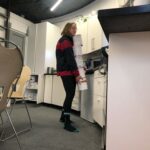
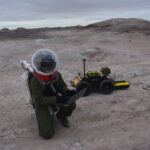
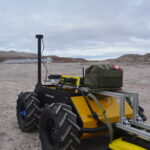
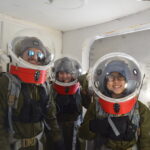
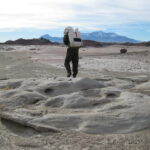
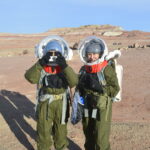
You must be logged in to post a comment.